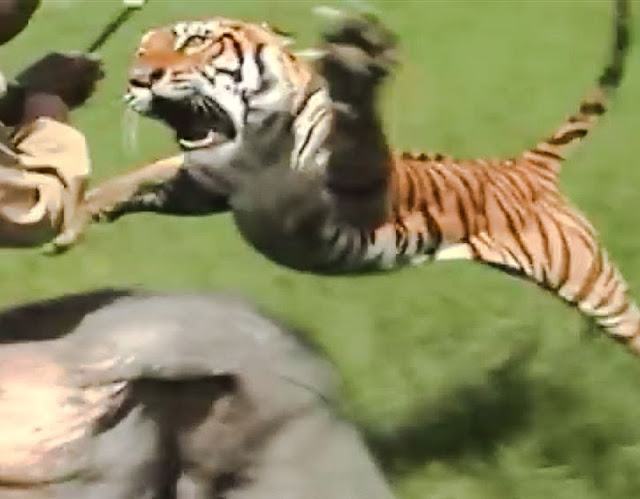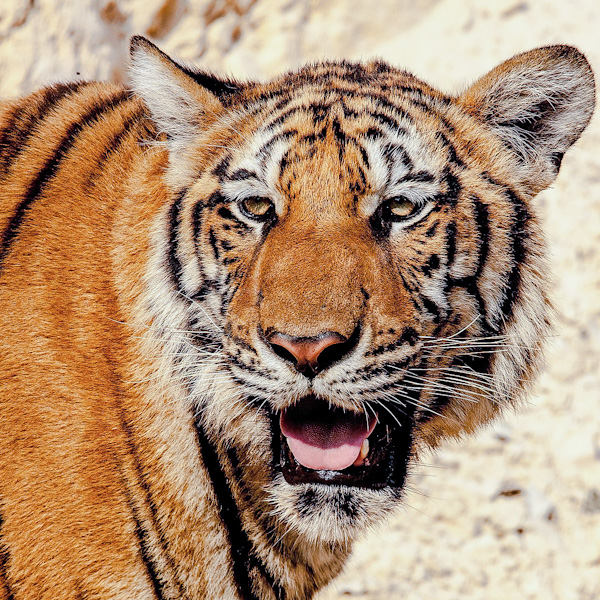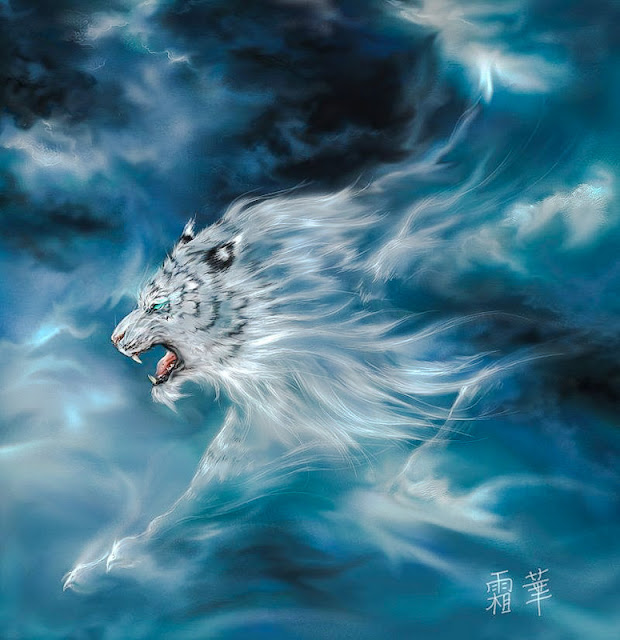How do tigers kill their prey?
Tigers use their black-striped orange coat as camouflage. Some people might find it hard to imagine the tiger coat as an effective camouflage but bearing in mind the wide range of landscapes in which they hunt it works well. A tiger approaches its prey stealthily and up wind using available cover. It will make a last minute dash to deliver a blow with its massive foreleg. The tiger's dash will be short at about 30 m in order to improve the chance of success as it will struggle to maintain top speed over distances much longer than this.
 |
| Tiger attack taken from a YouTube video |
Large animals
It knocks the prey down and then grabs the animal with the sharp claws of its four paws. At the same time it clamps its jaws around the prey animal's throat to suffocate it. Sometimes tigers keep its jaws clamped around the throat for longer than necessary and past the moment that the animal has died. It will then drag the carcass to a safe place to eat it. Tigers have enormous strength and can pull a weight of up to 507 pounds over considerable distances. Once the prey is undercover the tiger will start eating and may gulp down as much as 66 pounds of flesh at one sitting. That, in outline, is how tigers kill their prey.
Smaller prey
Tigers kill any animal that presents itself to them and which is in a vulnerable position. In addition to the suffocating bite which they employ for larger animals, they may also employ the neck bite in which a canine tooth is inserted between the neck vertebra which forces them apart breaking the spinal-cord. They employ this for smaller animals.
In employing this bite, they avoid striking bone which might break their teeth. Tigers have receptors in their teeth. It is believed that they can feel where to bite with their canine teeth. This allows the bite to be positioned accurately between vertebra. Not all bites are accurately made between vertebra because in one study they found bone splinters.
In the suffocating bite they position the jaws just below the junction of the prey animal's jaw and neck which crushes the animal's trachea. The tiger holds the prey animal's neck to the ground which stops the animal righting itself or standing.




Comments
Post a Comment
Please comment.